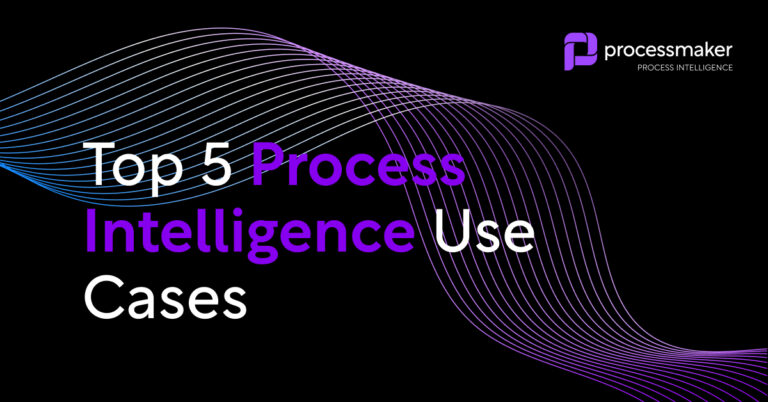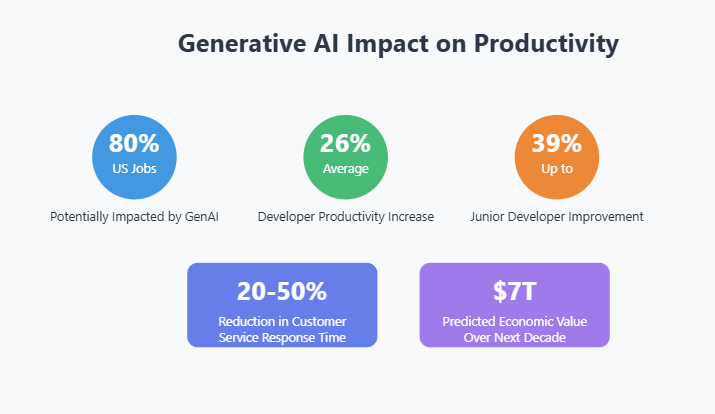Process mining solutions and task mining are interrelated analytical tools used in business process management. In this article, we summarize the core definitions, common use cases, and key differences between the solutions.
What is process mining?
Process mining is a powerful process mapping tool used for end-to-end process analysis and optimization. Process discovery is a key component of process mining, enabling the identification and optimization of business processes through technology. It uses data from event logs that are available in IT systems. Based on that data, it builds the as-is process and then compares it to the “desired” process. By doing this conformance checking, companies can find process deviations and thus improvement opportunities.
Typical process mining use cases:
Process mining can be used in many different fields for various purposes but here are some of the more popular use cases.
- Auditing & Compliance: Process mining can be used to analyze event logs generated by information systems to identify deviations from standard procedures, policy violations, or potential fraud. By visualizing the actual process flows and comparing them to predefined rules and best practices, auditors can pinpoint non-compliant activities, inefficiencies, or bottlenecks. Process mining can also help in automating the audit process, reducing the time and resources required for manual investigations, and providing a continuous monitoring mechanism for compliance.
- Order Management: Process mining can be applied to order management processes to identify bottlenecks, inefficiencies, or deviations from the optimal process. By examining the flow of order-related data through various systems (e.g., CRM, ERP), organizations can gain insights into the end-to-end process, monitor key performance indicators (KPIs), and identify opportunities to streamline operations, reduce lead times, and improve overall customer satisfaction.
- Purchase-to-Pay: In the purchase-to-pay process, process mining can be used to analyze the complete procurement cycle, from requisition and purchase order creation to goods receipt and invoice processing. By visualizing the actual process flow and detecting deviations, organizations can identify inefficiencies, bottlenecks, or potential fraud. This information can be used to streamline the procurement process, improve supplier management, enforce compliance with procurement policies, and ultimately achieve cost savings.
- Order-to-Cash: Process mining can help organizations optimize their order-to-cash cycle by analyzing event logs from various systems (e.g., CRM, ERP, and accounting) to understand how orders, deliveries, invoicing, and payments are processed. By uncovering inefficiencies or bottlenecks, organizations can implement improvements to reduce days sales outstanding (DSO), increase cash flow, and enhance customer satisfaction.
- Lead-to-Order: In the lead-to-order process, process mining can be used to analyze the sales cycle from lead generation to order placement. By examining data from marketing, sales, and CRM systems, organizations can gain insights into the effectiveness of their sales funnel, identify areas of improvement, and optimize the process for higher conversion rates and revenue growth.
- Logistics and fulfilment: Process mining can be applied to logistics processes to uncover inefficiencies, delays, or deviations in areas such as transportation, warehousing, and inventory management. By analyzing event logs from various logistics systems, organizations can gain insights into the actual processes, identify patterns, and implement improvements to optimize their supply chain operations, reduce lead times, and minimize logistics costs.
By leveraging process mining, organizations can gain insights into their core business processes, leading to enhanced performance and informed decision-making.
What is task mining?
Task mining is another process mapping tool focused on task optimization typically on desktops or workstations. Much like process mining, it monitors the digital traces of the users, capturing user interaction data to analyze and find patterns that could be interpreted as improvement opportunities. Using character recognition, natural language processing, and other tools, it analyzes the data gathered and finds patterns that could be interpreted as improvement opportunities.
Typical task mining use cases:
- Reduce manual tasks, e.g., data entry: Task mining can be used to analyze the way employees perform data entry tasks by capturing their interactions with various applications and systems. By identifying repetitive tasks, manual work, or inefficient data entry methods, organizations can implement automation solutions, such as robotic process automation (RPA), to reduce manual data entry, eliminate human errors, and increase overall efficiency. Task mining provides objective insights derived from actual data to audit and improve existing business processes without the need for extensive overhauls.
- Streamline invoicing: Task mining can help analyze the invoicing process by monitoring how employees interact with invoicing tools and systems. This analysis can reveal bottlenecks, inefficiencies, or duplicated efforts. Organizations can use these insights to simplify the invoicing process, implement automation where appropriate, and ensure that invoices are generated and processed in a timely and accurate manner.
- Speed up reporting: Task mining can be used to analyze the tasks involved in creating and distributing reports across an organization. By capturing the way employees interact with reporting tools and systems, task mining can help identify time-consuming or repetitive tasks that can be automated or streamlined. This can lead to faster report generation, reduced manual effort, and improved access to accurate and up-to-date information for decision-making.
- Optimize reconciliation processes: Task mining can help analyze the steps involved in financial reconciliation processes, such as matching transactions, identifying discrepancies, and resolving issues. By understanding how employees perform these tasks and interact with financial systems, organizations can identify inefficiencies or areas prone to errors. This information can be used to optimize the reconciliation process, implement automation solutions where appropriate, and improve overall accuracy and efficiency.
- Improve customer service: Task mining can be applied to customer service processes to analyze how employees interact with customers and the tools they use to resolve issues or answer inquiries. By identifying repetitive tasks, inefficiencies, or areas where employees struggle, organizations can implement process improvements, automation, or training to enhance the customer service experience. This can lead to faster resolution times, improved customer satisfaction, and increased customer loyalty.
What’s the difference between process mining and task mining?
In simple terms, process mining involves the analysis of business processes based on IT system event log data while task mining involves the analysis of workflow tasks from user interface interactions. In practice, process mining and task mining are both closely related aspects that differ in the way data is collected, the scope of data analysis, and the end goal of data analysis. Both methodologies aim at process improvement, albeit through different scopes and data collection methods.
Difference 1: How the data is collected

Process mining typically involves the collection of event logs from IT source systems, such as the enterprise resource planning (ERP) or customer relationship management (CRM) systems used by enterprise businesses. In practice, process mining tools are configured to integrate and extract event logs from each different source system, and process mining algorithms are used to merge and visualize processes and process variations in a business intelligence dashboard.
Task mining software usually collects workflow and task activity from the user interface of employees, typically from an agent on a desktop computer or in some cases extensions to web browsers used to access business applications. Some popular task mining solutions use image capture algorithms to automatically record activity data that is then visualized in task and workflow analysis dashboards.
Difference 2: scope of data analysis

Process mining typically involves the analysis of broader defined business processes and workflows at a large scale, such as the accounts payable, order-to-cash, or customer lifecycle processes. On the other hand, task analysis can go into specific detail about individual tasks within a specific workflow or process, outlining individual steps taken, for example, to create a purchase order.
Difference 3: goal of data analysis
The third clear difference in the scope of process mining and task mining is the end goal for analysis. As a broad generalization task mining may be used in teams and business units with a lot of repetitive work to measure and compare employee performance, while process mining is often used in relation to process re-engineering or operational excellence initiatives.
Bottom line
Ultimately, process mining and task mining are highly related areas of business process management software. You can consider process mining to give the “bird’s eye view” of the high-level, macro trends, while task mining gives the “ant’s view” of the detailed, microelements of business processes. In different scenarios, you may find a need for a high-level or detailed view or a combination of both.
Some software vendors may offer process mining and task mining solutions separately as part of the same process intelligence platform, and ProcessMaker Process Intelligence (PI) is a new software vendor that offers a hybrid process intelligence solution combining both methods natively into one solution. See the whitepaper for more information on the hybrid solution.





